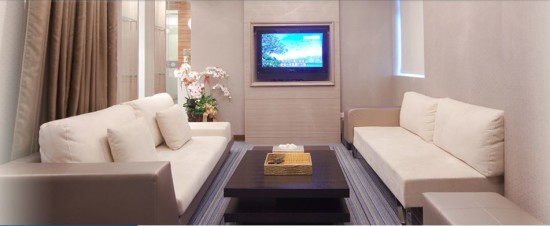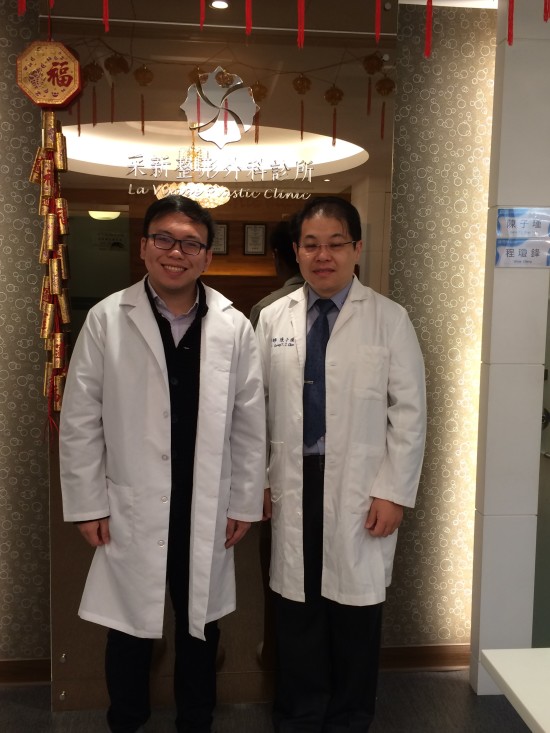We take another break from your regularly scheduled ENT Weekly to bring you another special from the island country of Taiwan. This time we look at private pay healthcare, focusing on cosmetic medicine.

Dr. Gerry Chen’s consultation room is not of your ordinary clinic. Would you like a bottle of water? Image Source: Justin Chin.
After my experiences with primary care, I wanted to experience a totally different aspect of medicine, looking this time into the tantalizing world of cosmetic surgery. Common connotations of breast augmentation and liposuction often prevail in the world of cosmetic/plastic surgery, but ultimately it is still a field in medicine in which physicians undergo rigorous training. In particular, I got to witness a rhinoplasty with Dr. Gerry Chen, a US board-certified plastic surgeon, who returned to Taiwan to practice near his family. In opening La Visage Beauty Center, he decided to implement a pay-for-fee service instead of opting into the Taiwan National Health Insurance.
Rhinoplasty is derived from the German term “rhinoplastik” which means “changing the shape of the nose”. The technique involves first accessing the bone and cartilage that support the nose, with incisions done internally or externally. This is the primary difference between an “open” rhinoplasty in which incisions are made across the skin separating the nostrils, called the columella, and a “closed” rhinoplasty, in which incisions are made inside the nose by the wall that divides the nose in half, called the nasal septum. The underlying bone and cartilage is reduced, augmented, or rearranged to create a newly-shaped structure using various files and rasps, not unlike how Emory boards are used to file nails. At this point, the physician becomes a beautician as he or she attempts to make the external nose similar to the predetermined shape at the patient’s consultation.
This procedure is typically done in an outpatient surgery center, with patients returning home the same day to rest. Pain and antibiotic medications may be prescribed if needed, with external sutures removed at around a week after surgery. Patients often have “panda eyes” or bruising around the eyes, which typically heal around 2 weeks post-surgery. According to Dr. Chen, rhinoplasty has relatively fewer risks in comparison to other cosmetic surgeries, with most problems stemming from the patient’s perceived effectiveness of the surgery to alter the appearance. Perforating the nasal septum may also occur, resulting in chronic nose bleeds and whistle-sound breathing, requiring a septoplasty to repair the hole.

Many thanks to Dr. Gerry Chen for having me in his office and offering this shadow opportunity! Image Source: Justin Chin.
Altogether going to Taiwan was itself a rewarding experience, so was learning about their healthcare through the context of their culture and history. Next week, we will be returning to our normally scheduled ENT Weekly!
Featured Image Source: Justin Chin










